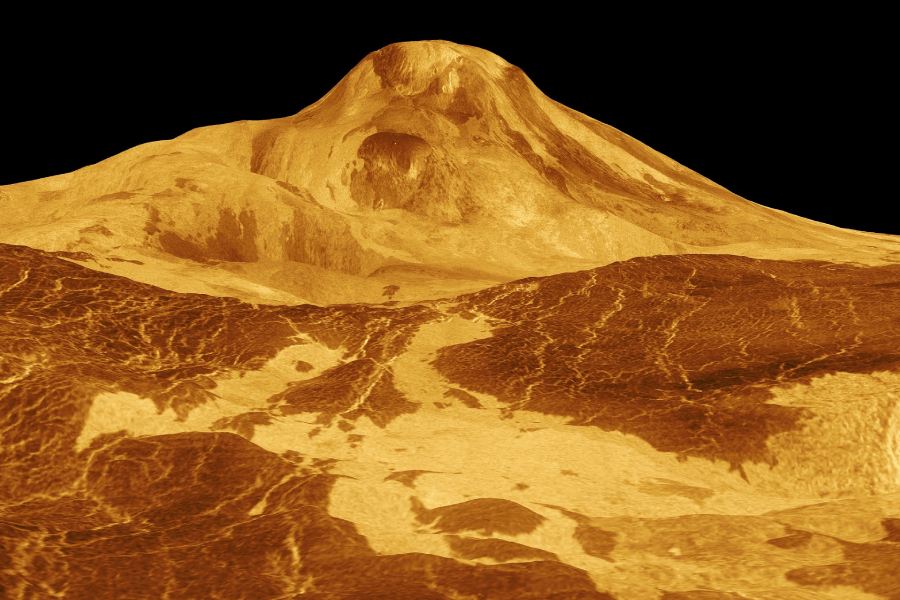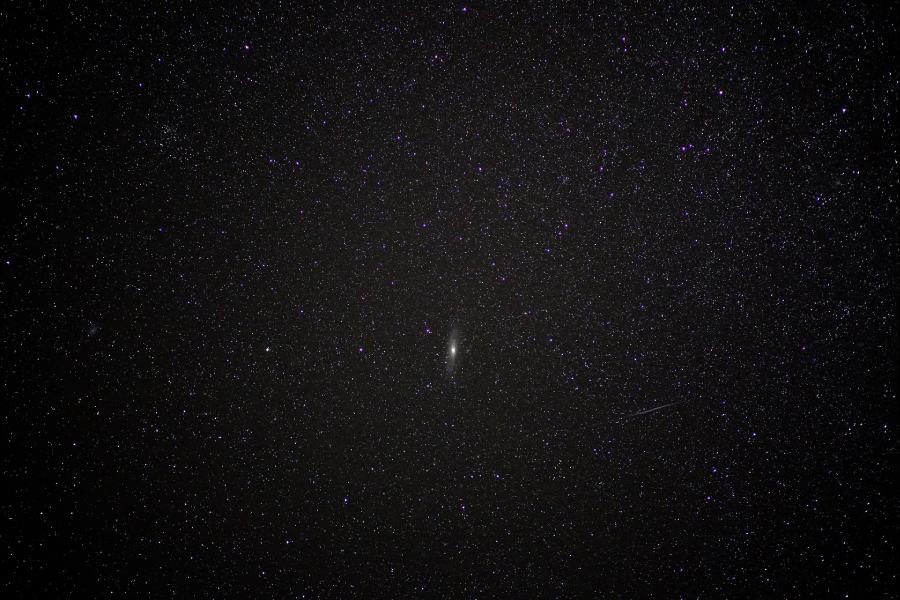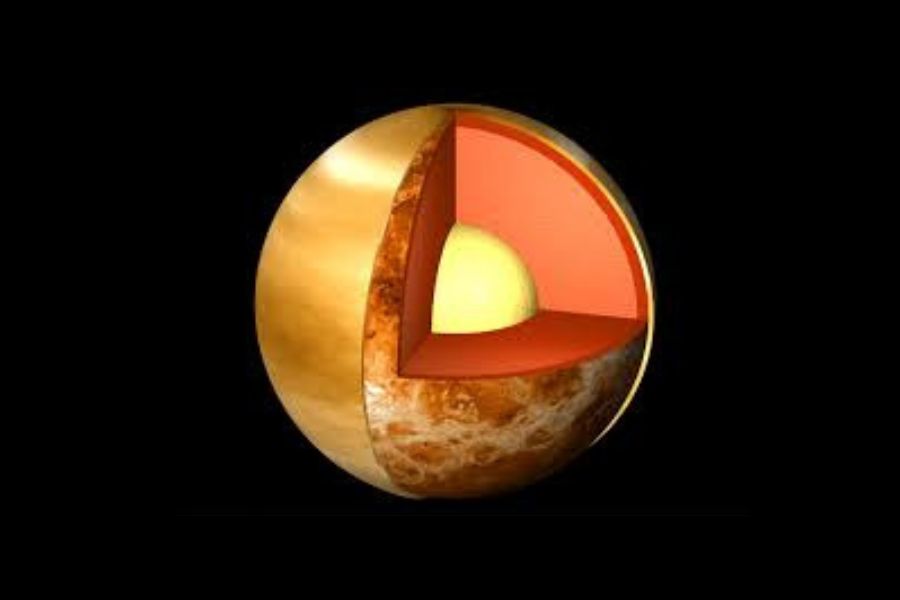Venus, Earth’s enigmatic sister planet, has long intrigued scientists and stargazers alike. This celestial neighbor, often spotted as the “Evening Star” or “Morning Star” in our skies, offers a captivating contrast to the familiarity of our own world.
Often referred to as Earth’s “sister planet”, Venus shares some similarities with our home world, but it’s also vastly different in many ways. From its unpredictable weather patterns to its backward rotation, Venus has perplexed and fascinated researchers for generations.
From its blistering surface temperatures capable of melting lead to its thick, toxic atmosphere that crushes everything in its embrace, Venus stands as a stark contrast to the more temperate and hospitable conditions found on Earth.
In this article, we will embark on a journey through the unique and sometimes bewildering characteristics that define Venus. By the end of this exploration, you’ll have gained a deeper appreciation for this captivating neighbor in our solar system and the scientific mysteries it continues to unravel.
Unique Characteristics of Venus
So, what are the prominent Venus characteristics? Venus stands out with extreme surface temperatures, a thick carbon dioxide atmosphere causing crushing pressure, and a retrograde rotation. It experiences turbulent weather with hurricane-like storms and acid rain.
While similar in size to Earth, Venus’s scorching conditions and unique features make it a fascinating, albeit inhospitable, celestial body.
Venus, the second planet from the Sun and often referred to as Earth’s “sister”, is a celestial body that has fascinated astronomers and scientists for centuries. In this exploration of Venus’s characteristics, we will delve into several intriguing aspects that define this enigmatic world, shedding light on its unique features and mysteries.
1. Ashen light – unveiling the mysterious glow
Venus’s enigmatic “ashen light” has intrigued observers for centuries. This faint, ghostly illumination on the planet’s night side remains a captivating mystery. Historical records abound with descriptions of this ethereal glow, but its origin continues to elude us.
Some theories suggest that it may result from sunlight scattering through Venus’s thick atmosphere, while others propose volcanic activity as a possible cause.
Scientists are actively engaged in unraveling the secrets of ashen light, using advanced instruments and spacecraft to study this phenomenon. Unveiling the true source of this mysterious glow could provide valuable insights into Venus’s atmospheric and geological processes.
2. Magnetic field – a surprising absence
Venus, unlike Earth, lacks a substantial magnetic field. The absence of such a field is a puzzle, considering the planet’s similar size to Earth. One prevailing theory suggests that Venus may have had a magnetic field in the past but lost it due to a process known as magnetic field decay.
This absence has profound implications for Venus’s atmosphere and geology. Without the protection of a magnetic field, the solar wind may have stripped away much of Venus’s atmosphere over time, contributing to its hostile conditions.
3. Surface geology – volcanic plains and highlands
Venus’s surface presents a remarkable and intricate landscape characterized by a variety of distinctive features. These include vast volcanic plains, towering shield volcanoes, and the enigmatic presence of complex impact craters.
Volcanic plains
Venus showcases extensive volcanic plains that stretch across significant portions of its surface. These plains provide evidence of the planet’s rich volcanic history.
They are composed of ancient lava flows, which have created a textured and undulating terrain. Some of these plains exhibit signs of relatively recent volcanic activity, hinting at a still-active geological system.
Shield volcanoes
Scattered across Venus are impressive shield volcanoes, reminiscent of their counterparts on Earth’s Hawaiian Islands. These colossal volcanic structures, such as Maat Mons and Sapas Mons, rise prominently above the surface.
The study of these shield volcanoes not only reveals the planet’s geological complexity but also offers insights into the volcanic processes that have shaped its topography.
Complex impact craters
Despite its distinctive geological features, Venus notably lacks large impact craters. This absence of extensive cratering suggests that the planet has undergone significant resurfacing events. Such events may be linked to volcanic activity and tectonic-like forces, erasing evidence of past impacts.
Geological significance
Analyzing Venus’s geological features provides scientists with essential clues about its history and evolution. The examination of lava flows, tectonic fractures, and volcanic deposits offers valuable insights into the planet’s geological processes.
This information deepens our understanding of how Venus’s surface has evolved over billions of years and the mechanisms responsible for shaping its unique topography.

4. Observability – Evening and Morning Star
Venus, often referred to as the “Evening Star” when it graces our western skies after sunset and the “Morning Star” when it appears in the east before sunrise, is a celestial phenomenon that has fascinated humanity for millennia. Its exceptional visibility is attributed to several factors, making it a captivating object of study and observation in the field of astronomy.

Proximity and orbit
Venus’s proximity to Earth plays a pivotal role in its visibility. It is the second planet from the Sun, situated between Earth and Mercury.
As a result, Venus frequently comes relatively close to our planet during its orbit around the Sun. When it is on the same side of the Sun as Earth, we witness its brilliant presence in our skies.
Reflective cloud cover
Venus’s dense cloud cover composed of sulfuric acid droplets is highly reflective. This cloud layer reflects a significant portion of sunlight back into space, making Venus one of the brightest objects in our sky after the Sun and Moon. This reflective property contributes to its striking visibility during dawn and dusk.
Historical significance
Throughout history, the appearance of Venus as the “Evening Star” and the “Morning Star” held profound cultural and astronomical significance.
Ancient civilizations, such as the Babylonians and Maya, meticulously observed Venus’s movements, attributing religious and calendrical importance to its cycles. These observations laid the foundation for early astronomical knowledge and paved the way for a more precise understanding of celestial mechanics.
Contributions to astronomy
Observations of Venus have played a pivotal role in advancing our understanding of planetary motion and the nature of our solar system.
Venus’s phases, akin to those of the Moon, provided crucial evidence for the heliocentric model proposed by Copernicus, demonstrating that the planets orbit the Sun. These observations challenged geocentric models of the universe and paved the way for modern astronomy.
5. Phases – Venus as a crescent
Venus’s phases offer a fascinating glimpse into the planet’s position in its orbit around the Sun. These phases, which range from crescent to gibbous, provide both historical and scientific significance, shedding light on the dynamics of our solar system and challenging earlier conceptions of the cosmos.
Understanding Venus’s phases
The phases of Venus are a direct consequence of its position relative to the Earth and the Sun. As Venus orbits the Sun within our solar system, its varying position results in distinct phases that observers can witness from Earth.
- Crescent phase – When Venus is positioned between the Earth and the Sun, it appears as a slender crescent. This phase occurs when Venus is at its closest approach to Earth, and its sunlit side faces away from us.
- Gibbous phase – Conversely, when Venus is on the opposite side of its orbit, positioning it on the far side of the Sun from Earth, it appears as a nearly full disc or gibbous phase.
Historical significance
Venus’s phases have profound historical significance in the realm of astronomy. They played a pivotal role in challenging the prevailing geocentric model of the universe, where Earth was believed to be at the center of all celestial motion.
Observations of Venus’s changing phases provided evidence for the heliocentric model proposed by Nicolaus Copernicus, which correctly posited that the planets, including Earth, orbit the Sun. This marked a monumental shift in our understanding of the solar system and laid the foundation for modern astronomy.

Scientific insights
Today, the phases of Venus continue to be a source of scientific interest. Observations of these phases, combined with precise measurements, allow astronomers to calculate the distance between Earth and Venus and, by extension, the scale of the entire solar system.
Additionally, studying Venus’s phases provides valuable data for refining our understanding of celestial mechanics and planetary orbits.
6. Daylight apparitions – rare occurrences
Daylight apparitions of Venus, though infrequent, are captivating celestial events that showcase the delicate interplay of astronomical phenomena and earthly conditions. These rare occurrences offer a unique opportunity to witness Venus, the “Morning Star”, gracing the daytime sky in all its luminous splendor.
Aligning cosmic and atmospheric factors
For a daylight apparition of Venus to transpire, a precise alignment of cosmic and atmospheric factors is necessary. It begins with the orbital positions of Venus and Earth. Venus must be positioned in such a way that it is both close to Earth and in a position that allows it to appear ahead of or behind the Sun in our line of sight.
Additionally, Earth’s atmosphere plays a crucial role. Clear atmospheric conditions are vital for the successful observation of Venus during daylight. A sky devoid of heavy cloud cover or atmospheric disturbances enhances the chances of witnessing this spectacle.
The brilliant daytime appearance
When all these conditions align, Venus makes its radiant appearance against the backdrop of the daytime sky. Its brilliance is unmistakable, as it outshines all other celestial objects, including the blueness of the daytime heavens.
During this brief window of visibility, Venus can be observed either shortly before sunset as the “Evening Star” or after sunrise as the “Morning Star”.
A testament to celestial dynamics
Daylight apparitions of Venus serve as a compelling testament to the intricate and predictable dance of celestial bodies in our solar system.
They underscore the precision with which planets like Venus orbit the Sun and how our understanding of their movements allows us to anticipate and marvel at such rare celestial occurrences.
7. Transits – a celestial alignment
Transits of Venus, where the planet crosses the face of the Sun as seen from Earth, are extraordinary celestial alignments. These transits hold historical significance, with observations aiding in early attempts to measure the astronomical unit – the Earth-Sun distance.
They provided crucial data for understanding the scale of our solar system. Although transits are rare, they remain scientifically valuable. The most recent transits in 2004 and 2012 were meticulously observed, contributing to our knowledge of planetary dynamics and reinforcing the deep connections between Earth, Venus, and the Sun.
Physical Characteristics of the Planet Venus
Venus, Earth’s closest planetary neighbor, is a world of extremes with a unique set of physical characteristics that set it apart in our solar system. In this exploration, we will delve into the fundamental aspects that define Venus’s physical nature, offering a glimpse into its intriguing features.
Structure and surface
Surface topography
Venus boasts a rugged and dynamic surface featuring vast volcanic plains, towering shield volcanoes, and extensive highland regions.
Its surface is pockmarked with impact craters, but notably absent are the large craters seen on other planets, suggesting relatively recent resurfacing due to volcanic activity.
Geological features
The planet’s geology is characterized by extensive volcanic flows and intricate tectonic structures. Venus’s geological history is marked by intense volcanic activity, shaping its surface and giving rise to unique formations like pancake domes and coronae.
Time on Venus
Venus rotates in the opposite direction to most planets, including Earth, resulting in a retrograde rotation. A day on Venus, from one sunrise to the next, is longer than its year, with an average day-night cycle lasting approximately 117 Earth days.
Venus’s slow rotation, combined with its thick cloud cover, results in a phenomenon known as “super-rotation” in its upper atmosphere, where the winds can reach speeds of up to 200 miles per hour (322 kilometers per hour).
Venus neighbors
Proximity to Earth
Venus is Earth’s nearest planetary neighbor, coming within about 25 million miles (40 million kilometers) at its closest approach. Due to its proximity, Venus has been a subject of fascination for astronomers throughout history and continues to be a target for space exploration missions.
Orbit and relationship with other planets
Venus orbits the Sun at an average distance of about 67.2 million miles (108.2 million kilometers). It is situated between Mercury and Earth in the inner region of our solar system.
The interactions between these inner planets, including orbital resonances and conjunctions, have contributed to our understanding of planetary dynamics.
As we explore the physical characteristics of Venus, we gain valuable insights into the processes that have shaped this remarkable planet and its unique place in our cosmic neighborhood.
From its distinctive surface features to its peculiar rotation, Venus remains an intriguing subject of study, offering a window into the complexities of planetary science.
Frequently Asked Questions
What makes Venus so special?
Venus stands out in our solar system for several reasons. First and foremost is its extreme surface temperature, which can reach a scorching 900°F (475°C).
This unparalleled heat is due to a runaway greenhouse effect caused by its thick carbon dioxide-rich atmosphere, making Venus the hottest planet in our solar system.
Another unique aspect of Venus is its retrograde rotation, meaning it spins on its axis in the opposite direction to most other planets, including Earth. This results in a day on Venus being longer than its year.
Venus also has striking surface features, including vast volcanic plains, towering shield volcanoes, and enigmatic geological formations. Its surface is remarkably young, suggesting relatively recent volcanic activity and resurfacing events.
Does Venus have moons?
Venus, surprisingly, does not have any natural moons or satellites. This is in contrast to many other planets in our solar system, such as Mars, Jupiter, Saturn, and even distant Pluto, which have moons of various sizes and characteristics.
The lack of moons around Venus is still a subject of scientific interest and exploration, as understanding the dynamics of moons and their absence can provide insights into a planet’s history and formation.
Is planet Venus habitable?
Venus is an inhospitable world when it comes to supporting human life. Its extreme surface temperatures, crushing atmospheric pressure, and toxic atmosphere make it a harsh and hostile environment. The surface conditions on Venus are so extreme that they would quickly prove fatal to any known life forms.
Despite these challenges, there has been scientific interest in the concept of terraforming Venus, which would involve transforming its atmosphere and surface to make it more Earth-like and potentially habitable. However, such a project would be immensely complex and faces numerous technical and logistical challenges.
Conclusion
In this exploration, we journeyed through the unique and sometimes bewildering characteristics that define Venus. From the enigmatic “ashen light” to the surprising absence of a magnetic field, from the captivating surface geology to its striking visibility as the “Evening Star”, we uncovered the layers of mystery shrouding Venus.
With its phases challenging ancient astronomical models, rare daylight apparitions illuminating our skies, and transits unveiling the cosmic ballet, Venus continues to contribute to our scientific knowledge and deepen our cosmic connections.
As we conclude this voyage of discovery, we leave with a richer appreciation for this celestial neighbor. Venus, with its extreme conditions and unique features, reminds us of the diversity and complexity of the cosmos. Its enigma endures, inspiring curiosity and exploration, inviting us to unravel the mysteries that linger in the brilliant haze of our sister planet.

